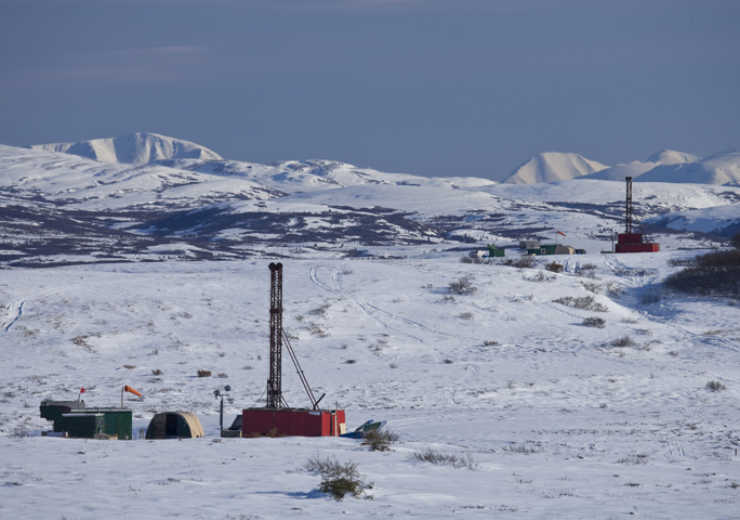The Canadian firm says it is confident its new Pebble-mine proposal will be accepted, after regulators requested damage mitigation for prized Alaska salmon-fishing waterways

Joe Biden plans to block the Pebble project, so all eyes will be on whether President Trump decides to fast-track approval during his last days in office (Credit: Northern Dynasty Minerals)
Northern Dynasty Minerals, the company behind the proposed Pebble mine project in Alaska, has submitted an updated proposal for the venture, after a key permit decision was delayed earlier this year.
The Compensatory Mitigation Plan (CMP) was delivered to the US Army Corps of Engineers (USACE), the regulatory body overseeing the planned development, ahead of an 18 November deadline.
Vancouver-based Northern Dynasty was requested back in August to revise its plans, to account for and avert “unavoidable adverse impacts to aquatic resources” under the initial proposal to the area surrounding the proposed mine site.
Twists and turns for Alaska Pebble-mine application
The project has been touted as the world’s largest undeveloped resource of copper, gold, molybdenum and silver, and would become one of America’s biggest mining operations if approved.
Recent reports from the Pebble Partnership – the subsidiary operating the venture – have also indicated “substantial quantities” of rhenium to be present – a strategic mineral with military applications.
But the Pebble mine’s proposed development near the prized Bristol Bay salmon-fishing area of south-west Alaska has attracted resistance from environmentalists and native Alaskans, who fear damage to the region and its waterways.
The Pebble venture, which was blocked on environmental grounds in 2014 by the Obama administration, appeared poised to be green lit during the summer following President Trump’s intervention to revive the permitting application.
But a final-hour decision by the USACE in August to request a mitigation plan accounting for waterway damage forced a re-think. Two months earlier, the federal agency had suggested the project would pose “no measurable effect” on fish populations following a two-year environmental impact survey.
Northern Dynasty’s chief executive Ron Thiessen said no details of the CMP would be revealed until the new plan is accepted by the USACE.
“The ‘in-kind’ and ‘in-watershed’ requirement for mitigation the USACE established for Pebble clearly sets a high bar for offsetting project effects on wetlands and other aquatic features, but it’s a challenge we have embraced and believe we can achieve,” he said.
“We have an experienced team in Alaska that has identified both the means and mechanism to meet the mitigation requirements, and complete a CMP that we believe will be acceptable to the USACE in form and content.”
Clock ticking as Biden administration prepares to take office
It is now up to federal agencies to review the CMP and decide whether or not it meets the required standards under the Clean Water Act.
While President Trump’s intervention helped revive the permitting process, it is unclear whether or not he will make fast-tracking a decision a priority during his final two months in the White House – something he has done for oil drilling in Alaska’s National Arctic Wildlife Refuge in recent days.
There was speculation that pressure from close Trump allies to block Pebble – including from his son Donald Jr – due to their fondness of the salmon-fishing grounds may have prompted the permit-decision U-turn in August.
Former Pebble Partnership chief executive Tom Collier – who resigned in September after making “offensive”, secretly-recorded comments boasting relationships with senior government officials – dismissed these reports at the time, saying the White House had “nothing to do” with the USCAE’s reversal.
President-elect Joe Biden has indicated he will seek to re-instate the Obama-era block on the project once he takes office on 20 January, so a delay of the USCAE’s decision beyond that date would likely be a blow to the mine’s future prospects.
There is no statutory timeframe for the federal agency’s review to be completed.
